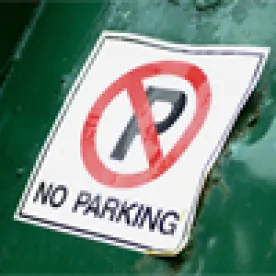Urban cities and developers alike are taking advantage of the modern utility and benefits of shared parking. Particularly in mixed-use projects, shared parking can deliver more affordable development, reduce construction waste, improve building aesthetics, and also reduce traffic. In the world of real estate development where solutions to housing affordability, massing aesthetics, and construction waste are difficult to find, shared parking assists in all these core challenges.
As a land use strategy, shared parking plainly optimizes parking capacity and prevents costly construction waste. As a result, shared parking can be used to greatly lower the costs of real estate development by lowering the amount of parking required especially for mixed-use real estate developments. Additionally, shared parking also has significant aesthetic benefits by reducing the bulk and mass of structured parking garages.
It seems counterintuitive, but the future of growing cities requires less, not more parking. Parking is unfortunately one of the largest uses of land in the United States and significantly impacts housing affordability, traffic congestion, and auto emissions. In many instances, parking occupies even more land than the actual building improvements. Studies suggest that there are four to five government-mandated off-street parking spaces per motor vehicle, including structured and residential parking. Therefore, since there are approximately 260 million motor vehicles in the U.S., there are more than a billion off-street parking spaces in the United States. Internationally, parking is argued to not only push up the cost of housing, but also be a danger to the environment. With shortages of land leading to increasing costs and structured parking in certain instances approaching $40,000 per space, it should come as no surprise that parking has become an immense challenge to every real estate development class.
One of the most powerful tools to combat excessive and underutilized parking spaces are shared parking reduction standards. Shared parking methodologies have been in use for decades. In fact, the Urban Land Institute’s (“ULI”) methodology for shared parking was created in the early 1980’s. Notwithstanding, it is astonishing that more than half of local municipal governments do not have a shared parking ordinance.
Shared parking allows proximate property owners and mixed-used developments to share their parking loads in order to jointly reduce the number of parking spaces required for each individual property and/or use. Shared parking recognizes that people often use a single parking space for multiple uses in a mix-used environment. The key to shared parking is that different real estate uses often have very different peak usage times. Parking demands operate on peak and off-peak hours based on the respective land uses requiring the parking demand. Complementary parking demand patterns, such as residential parking that is occupied in the evenings versus office parking that is empty in the evenings, offer an opportunity for increased parking structure efficiency. Hence, shared parking usually works best in scenarios where dissimilar land uses with different peak use times are in close proximity to one another.
As cities across the nation, chief among them New York and Seattle, consider sweeping parking reduction reforms, the Miami suburb of Coral Gables is leading the charge in South Florida. While South Florida has experienced population growth and recently topped over 6 million people, older Florida cities like Coral Gables that were planned a 100 years ago were not developed to meet the modern demands of vehicular traffic that accompany such a large population. Back in the 1920’s, the Ford Model T was still in production and the concept of structured garages was foreign. Fast-forward to 2019, and Coral Gables’ platted lots have proven too narrow for modern structured parking. The results have been aesthetically challenging as Coral Gables’ garages are required to be several stories taller than they should be to meet minimum parking standards due to their inefficient dimensions. Faced with the dilemma of parking garages becoming more massive than the actual uses the garages serve and reduction in parking demand due to ridesharing, the City of Coral Gables approved a shared parking reduction ordinance.
The Coral Gables shared parking ordinance is a model program in its intent, purpose, and application. The intent and purpose of this shared parking ordinance is to recognize the synergy among different peak parking demand times resulting from different uses within a mixed-use development. Notably, the Coral Gables code in its actual text also recognizes that the reduction of excessive parking spaces positively affects the aesthetics of building design. In order to maintain maximum flexibility in the application of its shared parking ordinance, the City of Coral Gables permits multiple shared parking methodologies including:
- ULI Shared Parking Methodology
- City provided shared parking matrix
- Applicants may provide a parking study supporting a proprietary parking solution
While the Coral Gables shared parking ordinance is still relatively new, mixed-use projects are now in the pipeline to take advantage of the benefits of the shared parking reductions.
Ultimately, municipalities like Coral Gables are great examples of how shared parking standards cut developer costs, and in turn create more affordable housing. These standards can serve as a model to other cities and developers should be encouraged to work with a land use specialists and even propose adopting of similar standards given the significant cost savings to all parties.





 />i
/>i
